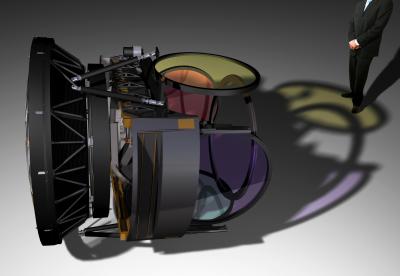SLAC National Accelerator Laboratory has created a pixel digital camera worth 3.2 B, which is ready to move to the next stage in its development. This Large Synoptic Survey Telescope camera that can capture a sharp and extensive view of the night sky has now achieved the U.S. Department of Energy’s (DOE) ‘Critical Decision 1’ approval. Upon receiving this approval, this innovation can pass on to the subsequent stages.
 The LSST camera will be the largest digital camera ever constructed. Its size of roughly five feet by 10 feet is similar to that of a small car and it will weigh over three tons. Credit: Image Courtesy of the LSST Corporation
The LSST camera will be the largest digital camera ever constructed. Its size of roughly five feet by 10 feet is similar to that of a small car and it will weigh over three tons. Credit: Image Courtesy of the LSST Corporation
The Large Synoptic Survey Telescope (LSST) will deliver an excellent public archive of data by spanning the entire visible sky on a weekly basis. The resultant is around 6 M- GB per year, which is equal to 800,000 images captured using regular 8MP digital camera. This supreme quality LSST is of high scientific significance. The frequent, deep cosmic vistas generated by LSST can be used to solve complex issues regarding the nature of dark matter and dark energy. It addition, it can facilitate studies involving the structure of our galaxy, Kuiper belt objects, near-Earth asteroids, and a broad range of astronomy and fundamental physics.
After passing the Critical Decision 1, LSST camera has entered a project encompassing detailed engineering design, schedule, and budget phase. The design and construction of the camera is supported by the DOE funds, while the DOE, together with NSF other partners will grant funds for the total cost and logistics of this telescope.
The telescope will enter its construction phase by 2014. Preliminary operation such as LSST's 8.4-m primary mirror and its final site atop Cerro Pachón in northern Chile is now under progress.
The creation of LSST is based on the dark energy. With LSST's fire hose of universal data, astronomers can observe the fading and rapidly changing objects, followed by constructing 3D maps and time lapses of the night sky and the Kuiper belt.